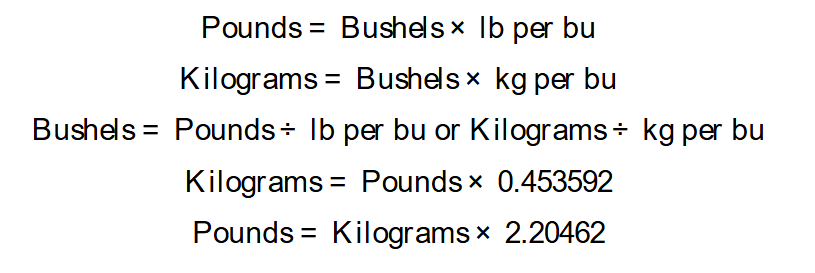 Home
Home
 Back
Back

Definition: This calculator converts the weight of agricultural commodities between bushels (bu), pounds (lb), and kilograms (kg), using standard conversion factors for various grains, seeds, and nuts.
Purpose: It helps farmers, traders, and agricultural professionals convert commodity weights for storage, transportation, or market transactions, ensuring accurate measurements across different units.
The calculator uses the following conversion relationships:
Steps:
Converting grain weights is crucial for:
Example 1 (Wheat, Bushels to Pounds and Kilograms): Convert the weight of wheat:
Example 2 (Soybeans, Pounds to Bushels and Kilograms): Convert the weight of soybeans:
Example 3 (Corn Shelled, Kilograms to Bushels and Pounds): Convert the weight of shelled corn:
Q: Why do conversion factors vary for different commodities?
A: Conversion factors depend on the density and moisture content of each commodity, which affect the weight per bushel. For example, shelled corn weighs 56 lb/bu, while oats weigh 32 lb/bu due to differences in grain size and density [Web ID: 0].
Q: Are these conversion factors exact?
A: No, the conversion factors are approximate and can vary based on factors like moisture content, variety, and storage conditions. The values provided are standard averages for typical conditions [Web ID: 0].
Q: How do I convert bushels to kilograms for wheat?
A: For wheat, multiply the number of bushels by 27.2 (the kg/bu factor). For example, 100 bushels of wheat = \( 100 \times 27.2 = 2720 \, \text{kg} \).